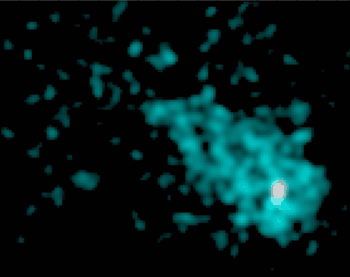Three American high-school students have discovered a long searched-for pulsar using data from the Chandra X-ray Observatory and the Very Large Array (VLA) radio telescope. Charles Olbert, 18, Christopher Clearfield, 18, and Nikolas Williams, 16, pupils at the North Carolina School for Science and Mathematics, won the Siemens-Westinghouse Science and Technology Competition in Washington, DC, for their work, which they have submitted to Astrophysical Journal.

Using data from the Chandra satellite, the young scientists pinpointed an X-ray source in the supernova remnant known as IC443 and asked the National Radio Astronomy Laboratory for data from the VLA to back up their find. The radiowave data confirmed that a point-like source exists in the remnant, supporting the team’s suspicion that the object is a pulsar. Their theory was confirmed when they found a cloud of high-energy electrons surrounding the radiation source – a characteristic of pulsars. “This is a really solid scientific finding”, said Bryan Gaensler of the Massachusetts Institute of Technology, an astrophysicist who reviewed the paper for the students. “Everyone involved can be really proud of this accomplishment.”
“The experience of doing new and relevant science has been one of the most rewarding experiences I have ever had”, said Olbert. “I never expected to publish a scientific paper while I was still in high school.” The students’ science teacher had applied for observation time while he was associated with NASA’s Goddard Space Flight Center.



